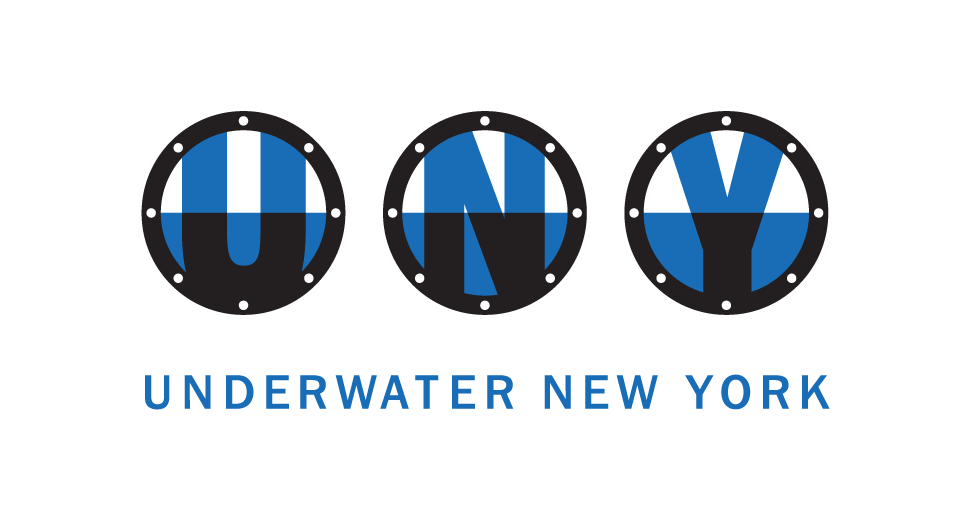A Brief History of Coney Island Creek
In the 17th century, Coney Island Creek was a small waterway that ended near what is now Cropsey Avenue. It was then dug into a straight that connected Sheepshead Bay to Gravesend Bay, making Coney Island an actual island. Because it was unnavigable, there was talk of widening it into a canal for shipping, but that never happened—once the five boroughs consolidated in 1898, this area lost its economic importance so there was no reason to turn it into a major shipping area. The creek was broken up by landfills over the years, then, in the 1950s, filled in and closed off for the construction of Shore Parkway—today, it is the two remaining inlets at either end.
It seems fitting that Coney Island Creek, home to an improbable collection of ghost ships, a stranded submarine and other haunting nautical detritus, was once known as Gravesend Creek. Over the years, not only ships have wound up in this watery grave, but many souls as well. In 1900, two women, ejected from a trolley for refusing to pay their fare, were run over on the trestle above the Creek, and fell in, dead. Accident-prone excursionists, strangulation victims, capsized picnickers and the downtrodden elite alike met their ends here. In 1895, a bereft Calvert Vaux, designer of Central Park, went for a walk along the water and was later found floating. Was it accident or suicide? We’ll never know.
Coney Island Creek has been the site of not only ghostly, but earthly sordid activity, as well. During Prohibition, Rum Row was a flotilla of schooners sitting off shore from Atlantic City up to Martha’s Vineyard, full of liquor from Canada, the Caribbean and Europe. It was brought into the city by big time mafia bootleggers like Frank Castello, head of Luciano crime family, and Big Bill Dwyer, who owned, among other sports teams, the Brooklyn Dodgers football team and controlled all rum-running in New York. Frankie Yale—the Undertaker—who owned a Coney Island dive at the waters’ edge where Al Capone had his first job, assisted the rum runners and was later gunned down by a rival on Crospey Ave. Many small time operators made rum-runs, too, with the same boats they used for fishing expeditions, helping liquor disperse into Long Island before it ever made it to the rest of the city. In the 1920s, we could have stood on this shore and watched rum-runners speed by being chased by the Coast Guard or hijackers.
From the 1890s to the 1950s, Brooklyn Borough Gas produced gas beside Coney Island Creek leeching pollution into it. People would bring their boats here to clean them with the corrosive sludge from the bottom of the creek. When the Verrazano Bridge was being built in the early sixties, excavated debris from the construction was dumped in the Creek. Area locals also remember that time as when the ghost ships started to turn up there. It was an anonymous dumping ground for these ships—some of them are said to be whaling ships—whose owners wanted to be rid of their bones. They’d either leave them to rot or burn them down to the waterline. Although the Army Corps of Engineers has studied ships abandoned in other parts of the city, it hasn’t been profitable to do it here, so these ships remain unidentified. These days, the creek is so polluted that the city is wary of moving the wrecks for fear of unleashing dormant toxins in the sludge around them.
And what of the Creek’s most famous denizen, the yellow submarine? It is one shipwreck begotten by another. In 1956, the ocean liner Andrea Doria collided with a second ship and never made it to the Port of New York, sinking in the Atlantic along with its valuable cargo. A decade later, Brooklyn dreamer and shipyard worker Jerry Bianco set out to claim some of that treasure for himself. Using repurposed material, bargain yellow paint and his maritime know-how, Bianco built a submarine on the banks of Coney Island Creek. Sadly, without enough ballast to keep it level, the submarine tipped and became stuck. After several further attempts, a storm quashed Bianco’s ambitions, tearing the submarine from the shore and lodging it in the mud, where it still sits, forty years later.
Today, gulls nest in the ribs of whalers, blue crabs scuttle in and out of the submarine and, atop of a submerged barge, enough debris has accumulated to form a brand new island. As so often happens in New York City, life perseveres in Coney Island Creek alongside all of the ghosts.
Underwater New York led an exploration of The Ghost Ships of Coney Island Creek for Obscura Day 2011. Documentation of that trip is forthcoming. In the meantime, check outphotographs by UNY’s own Adrian Kinloch, who has long been inspired by the Creek. This recent one of the island growing from a submerged barge at night is particularly stunning. Several historical, and hilarious, articles about Coney Island Creek appear on this site–to hear even more, visit Underwater New York under the Featured tab on Broadcastr.
BIBLIOGRAPHY
“Coney Island Creek Park.” www.nycgovparks.org. Web 27 March 2011
Lamb, Jonah Owen. “The Ghost Ships of Coney Island Creek.” New York Times. 6 August 2006. Web 27 March 2011.
Moynihan, Colin. “In Coney Island Creek, Hulk of Yellow Submarine Sticks Out.” New York Times. 9 November 2007. Web 27 March 2011.
“Two Women Killed by Car.” New York Times. 22 June 1900. Web 27 March 2011.
“The Yellow Submarine of Coney Island Creek.” forgotten-ny.com. Web 27 March 2011.
